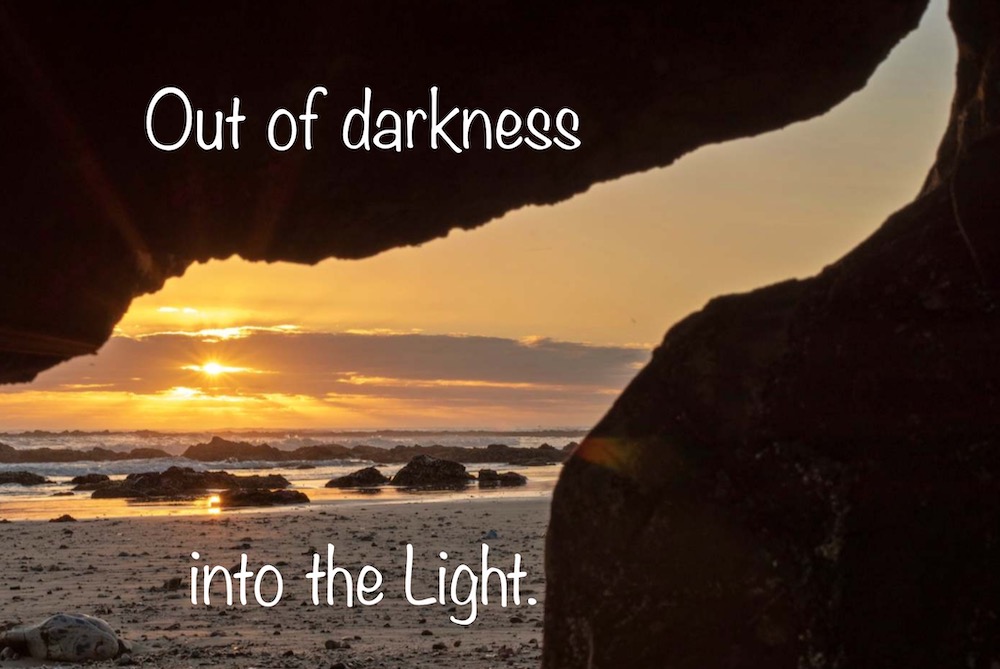
(Bryan Ricketts)
It was the best of times, it was the worst of times, it was the age of wisdom, it was the age of foolishness, it was the epoch of belief, it was the epoch of incredulity, it was the season of Light, it was the season of Darkness, it was the spring of hope, it was the winter of despair, we had everything before us, we had nothing before us ...
With these prophetic words, Charles Dickens begins his famous 1859 novel, A Tale of Two Cities, a story about a time of chaos, suffering and despair — but also about happiness and joy. It is a story of crucifixion but also of resurrection.
Having just survived terrible bushfires and years of drought, here in Australia — as in so many countries — we now face an invisible enemy, the coronavirus. Our way of life has suddenly changed drastically. Our governments have had to take strict measures to try to stop its spread. Our state borders have been closed and are being policed. Families and friends are cut off from one another. People are instructed to go into isolation and practice social distancing.
Many businesses have closed. There are long queues of people out of work and now seeking government financial assistance. Only a handful of people can attend weddings or funerals. Places where groups of people meet must close, including places of worship. This means for us who are Catholics that now there is nowhere in Australia where we can physically attend the Eucharist.
Besides making many confused, angry and fearful, a real danger is that some people will fall into despair and perhaps take their own lives. No one knows when this pandemic will end. We live in painful uncertainty, in darkness.
As Catholics, we are accustomed to journeying through Lent and then rejoicing during our Easter celebrations. Though we may not be physically able to be present at the liturgies now, the readings of this time can strengthen us and give us hope.
Advertisement
The Gospel for the Fourth Sunday of Lent was the story of the man born blind (John 9:1-41). Before curing the man's physical darkness, Jesus warns, "Night is coming when no one can work." In a sense, so many of us worldwide are presently stumbling in the darkness that this coronavirus has brought upon us. We are floundering, hoping to get through it. We need to see the light and have hope!
The very next words of Jesus in the reading give us this great hope, "I am the light of the World." Later he says, "Whoever follows me will not walk in darkness, but will have the light of life" (John 8:12).
The blind man not only gained physical sight, but he also grew in spiritual light. Unlike the Pharisees who failed to respond to the light of the world, he could see and believe in Jesus. A question here is: How will we respond? Though at this time we seem to be walking in darkness, can we, like the blind man, be open to Jesus' gaze and so live in hope, knowing that Jesus, our light, is with us?
In the Spiritual Exercises, St. Ignatius asks us to consider how God looks at me, at us. How do I / we react to this? Can we believe too that God speaks to us through Isaiah? "You are precious in my eyes, and honored, and I love you .... Fear not, for I am with you .... whom I created for my glory, whom I formed and made" (43:4-7). Jesus is God with a human face. In a number of places, the Gospels tell us that Jesus gazed intently at people; for example, he looked at the rich young man who asked him how to gain eternal life (Mark 10:21). His gaze was never judgmental — only compassionate.
It is likely that Mary Magdalene saw this compassionate gaze of Jesus whenever he looked at her. Having witnessed his suffering and death, very early on the first day of the week Mary Magdalene and the women go out to anoint the body of Jesus, even though they are still in darkness. In this time of darkness, as we witness suffering and death, how are we being called to reach out in compassion to those around us?
The women are looking for the body. The body is gone. Has it been stolen? The tomb is empty. Mary runs to tell the others. There is so much running — out of fear, out of confusion, running because Jesus seems to have disappeared. Where is he? In our fear and confusion, we well may ask, "Where is Jesus in all this darkness?"
Mary stays in the garden, weeping and longing. Her tears of grief turn into great joy as she hears Jesus call her name and sees his loving gaze fixed on her. She is not to cling to him but to go out to tell his sisters and brothers that he is risen. The light of their life, their hope, is alive. His Father is now their Father, his God, their God (John 20:1-18). Jesus, our hope, is with us now. He will not leave us alone. He has promised to be with us through it all (Matthew 28:20).
On the feast of the Annunciation, I reflected on the confusion Mary must have experienced on being asked to do something she did not understand, something which would make great demands on her. Yet, in faith, she made herself totally available to God. Despite these difficult times, can we Christians still make ourselves available to others, to comfort and reach out to those distressed and lonely? We can trust that Mary, help of Christians, will intercede with her risen Son for us!
[Karan Varker is a Sister of Charity of Australia. She has been a teacher in in Papua New Guinea, America Samoa and Australia, served as a principal in Australia and Samoa, and trained Catholic teachers in Samoa and the Solomon Islands.]







